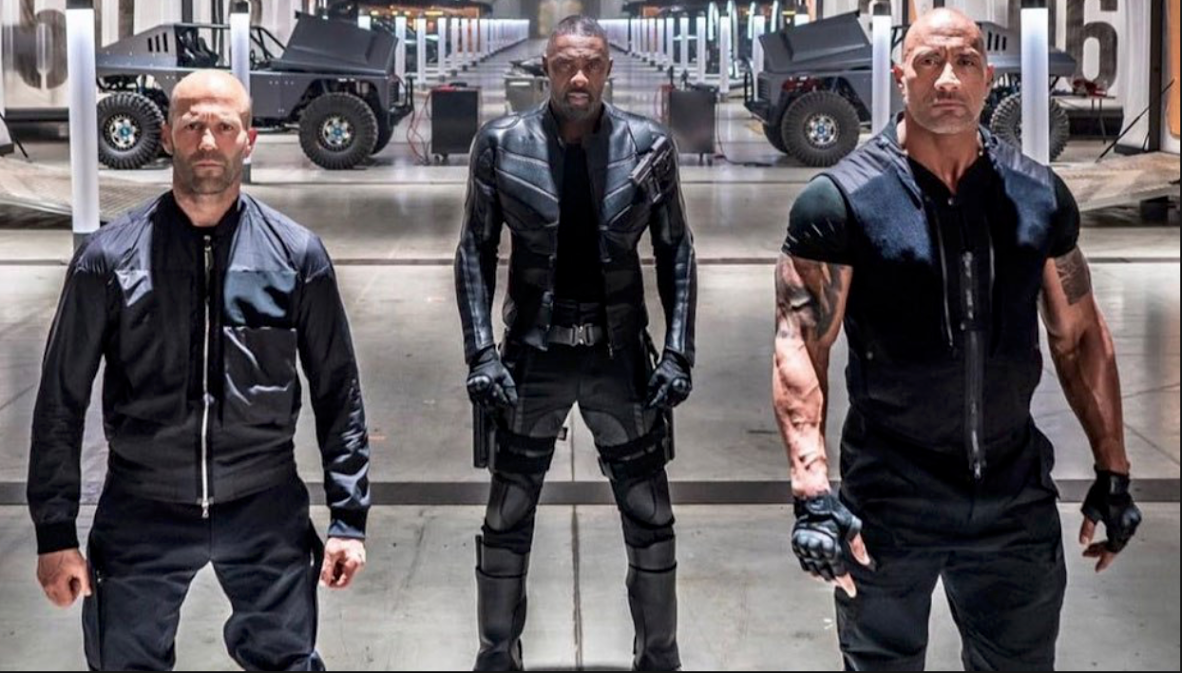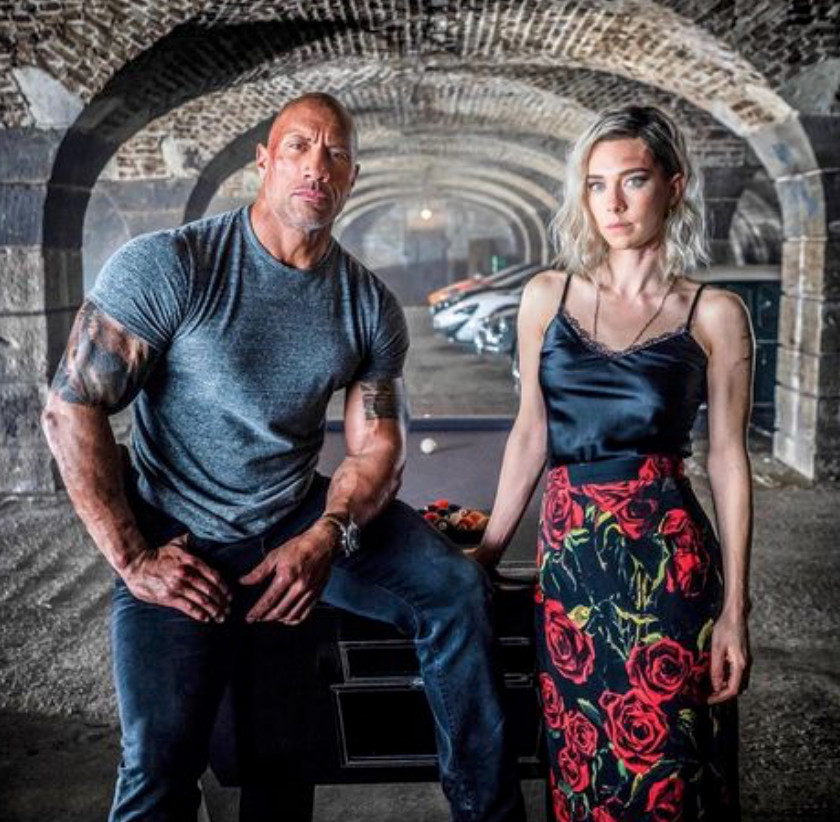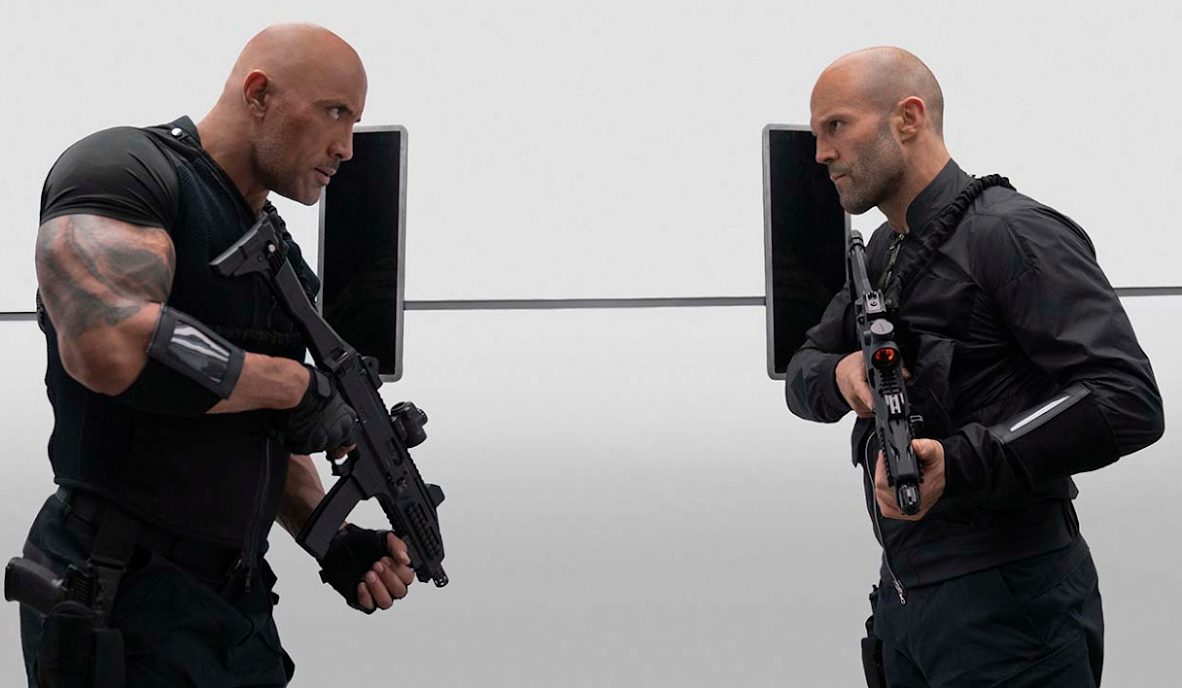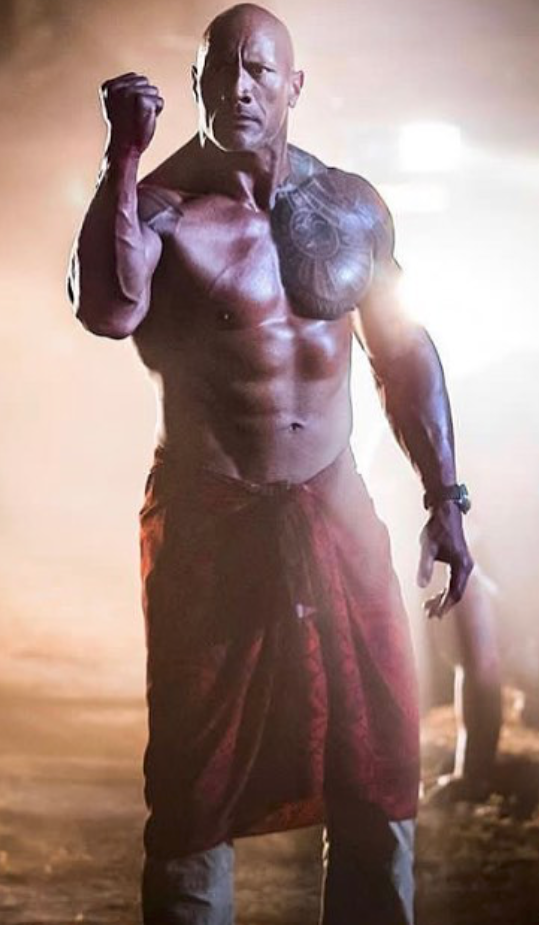By Sean Donovan

The Fast & Furious films have become some of our most trusted purveyors of pure Hollywood excess, concocting outlandish set pieces and barely logical heist plots that deliver thrills in big bold screaming letters, with an automative fetish that has been worth billions of dollars. But this spin-off, focused on two characters who joined mid-franchise, re-prioritizes the car fetish in favor of two male stars (and a third new one) whose bodies and larger-than-life macho personas are fetish objects in and of themselves. I have been affectionally naming this film ‘Daddy Fight’ ever since I first saw the trailer, for indeed that is what it is- gladiatorial combat to see who among Dwayne Johnson, Jason Statham, or Idris Elba will emerge as Daddy. The result is, quite simply, one of the most triumphant adrenaline-fueled homoerotic explosions in recent memory...

The plot of Hobbs & Shaw, such that it matters, follows ex DSS Agent Luke Hobbs (Johnson) and assassin Deckard Shaw (Statham), salty frenemies from their times with the Fast & Furious gang, who, recruited by the CIA, are forced to work together to stop Brixton (Idris Elba, fantastic), a rogue partially-robotic MI6 agent working to unleash a deadly virus. The virus is named ‘Snowflake’- shouldn’t they have called it, in the same spirit, ‘Candy-Ass,’ Johnson’s off-camera insult for co-star Vin Diesel? The virus is temporarily being housed protectively in the body of another MI6 agent (the most ridiculous of the film’s many plot contrivances), who also happens to be Shaw’s sister, Hattie Shaw (Vanessa Kirby). Hobbs and Shaw’s mission is thus two-pronged: to safely extract the virus from Hattie, and defeat Brixton’s plans of…world domination? I suppose? Whatever. There are many fantastic action sequences and eventually it all comes to a head in American Samoa, where the film thoroughly earns a series of moving family reunion scenes for Hobbs off the hard work of all involved. Along the way Vanessa Kirby delivers a stunning performance, capitalizing on her strong reception for The Crown with a star-making turn of faultless action heroine charisma. It will be thoroughly exciting to see where she goes from here. Johnson is equally terrific, reaching almost the heights of his still career-topping Jumanji: Welcome to the Jungle performance.

But most crucially distinct from its franchise, the film is free of franchise leading man Vin Diesel. Perhaps from afar one bald Hollywood muscleman is the same as any other, but there are worlds of difference between daddies Diesel, Johnson, Statham, and Elba. Hobbs & Shaw knows how to exploit this perfectly, letting their various star charismas (cheesy and perpetually ‘extra’ Dwayne, gritty and smirking Jason, smoldering and seductive Idris) interact chaotically, bouncing off each other in a gloriously fizzy friction that sometimes resembles less a 2010s action spectacular and more Feud: Bette and Joan. Vin Diesel’s star energy has always been very different: glum, lacking poise, mumble-mouthed, with no flair for comedy. The stars of Hobbs & Shaw perform masculinity to its ridiculous excess; Diesel discreetly occupies it, careful not to look like he’s trying too hard. The men of Hobbs & Shaw, however, are so openly ridiculous in their sexy, over-muscled braggadocio, that the film is a cathartic release and pleasuring in the Daddyness of it all.
 Early on Hobbs & Shaw features a split-screen comparison of Hobbs and Shaw as they go about their morning rituals of masculine preparation, Hobbs’s more spartan and rugged, Shaw’s more urbane and refined. It begins with the shot of the two men in bed. Viewed through the split-screen, we see it as one huge bed (appropriate for the behemothic men it houses). Here the two daddies could finally be allowed to cuddle, if only through the forgery of editing. Hobbs & Shaw’s finale doubles down on this look, in a slow-mo extravaganza of sweat and sinews as the three men battle it out in homoerotic extremity. The sequence bears a surprising similarity to the series finale of Bryan Fuller’s Hannibal adaptation, a show never shy about viewing male heroes and villains as queerly entwined. If the recent, fascinating Wall Street Journal report is to be believed, such tenderness is nowhere near the off-screen behavior of these muscle men divas, competitively seeking faux alpha supremacy in every shot. Then perhaps this impossible, combustible chemistry exists only in the edited, collaborative space of the film itself, which makes escapes like Hobbs & Shaw all the more thrilling and precious because of it.
Early on Hobbs & Shaw features a split-screen comparison of Hobbs and Shaw as they go about their morning rituals of masculine preparation, Hobbs’s more spartan and rugged, Shaw’s more urbane and refined. It begins with the shot of the two men in bed. Viewed through the split-screen, we see it as one huge bed (appropriate for the behemothic men it houses). Here the two daddies could finally be allowed to cuddle, if only through the forgery of editing. Hobbs & Shaw’s finale doubles down on this look, in a slow-mo extravaganza of sweat and sinews as the three men battle it out in homoerotic extremity. The sequence bears a surprising similarity to the series finale of Bryan Fuller’s Hannibal adaptation, a show never shy about viewing male heroes and villains as queerly entwined. If the recent, fascinating Wall Street Journal report is to be believed, such tenderness is nowhere near the off-screen behavior of these muscle men divas, competitively seeking faux alpha supremacy in every shot. Then perhaps this impossible, combustible chemistry exists only in the edited, collaborative space of the film itself, which makes escapes like Hobbs & Shaw all the more thrilling and precious because of it.
Grade: A
You can follow Sean on twitter @seandonovanesq